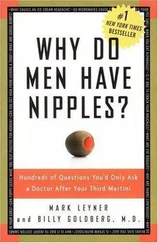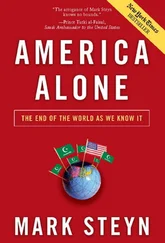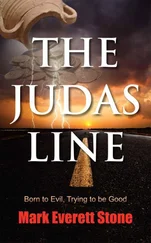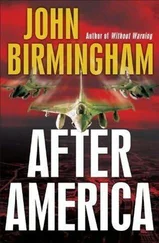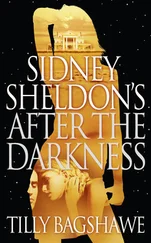It certainly distills the essence of the “clash of civilizations”: Islam is playing for tomorrow, whereas much of the West has, by any traditional indicator, given up on the future. We do not save, we do not produce, we do not reproduce, not in Europe, Canada, Vermont, or San Francisco. Instead, we seek new, faster ways to live in an eternal present, in an unending whirl of sensory distraction. Tocqueville’s prediction of the final stage of democracy prefigures the age of “social media”:
It hides his descendants and separates his contemporaries from him; it throws him back for ever upon himself alone, and threatens in the end to confine him entirely within the solitude of his own heart.

THE HOLE IS GREATER THAN THE SUM OF ITS PARTS
Almost anyone who’s been exposed to western pop culture over the last half-century is familiar with the brutal image that closes Planet of the Apes : a loinclothed Charlton Heston falling to his knees as he comes face to face with a shattered Statue of Liberty poking out of the sand and realizes that the “planet of the apes” is, in fact, his own—or was. What more instantly recognizable shorthand for civilizational ruin? In the film Independence Day , Lady Liberty gets zapped by aliens. In Cloverfield , she’s decapitated by a giant monster. If you’re in the apocalyptic fantasy business, clobbering the statue in the harbor is de rigueur .
As far as I can ascertain, the earliest example of Liberty-toppling dates back to an edition of Life , and a story called “The Next Morning,” illustrated by a pen-and-ink drawing of a headless statue with the smoldering rubble of the city behind her. That was in 1887. The poor old girl had barely got off the boat from France and they couldn’t wait to blow her to kingdom come. Two years later, on the cover of J. A. Mitchell’s story The Last American , she still stands but the city around her has sunk into a watery grave as a Persian sailing ship navigates the ruins of a once mighty nation called Mehrika in the year 2951.
But liberty is not a statue, and that is not how liberty falls. So what about a different kind of dystopian future? Picture a land where the Statue of Liberty remains in the harbor, yet liberty itself has withered away. The word is still in use. Indeed, we may have a bright shiny array of new “liberties,” new freedoms—“free” health care, “free” college education. If you smash liberty in an instant—as the space aliens do in Independence Day —we can all have our Charlton Heston moment and fall to our knees wailing about the folly and stupidity of man. But when it happens incrementally, and apparently painlessly, free peoples who were once willing to give their lives for liberty can be persuaded very easily to relinquish their liberties for a quiet life. In the days when President Bush was going around promoting the notion of democracy in the Muslim world, there was a line he liked to fall back on:
Freedom is the desire of every human heart . 15
If only that were true. It’s doubtful whether that’s actually the case in Gaza and Waziristan, but we know for absolute certain that it’s not in Paris and Stockholm, London and Toronto, Buffalo and San Jose. The story of the western world since 1945 is that, invited to choose between freedom and government “security,” large numbers of people vote to dump freedom every time—the freedom to make their own decisions about health care, education, property rights, the right to eat non-state-licensed homemade pie, and eventually (as we already see in Europe, Canada, the UN Human Rights Council, and U.S. college campuses) what you’re permitted to say and think. An America running out of ideas eventually gives up on the American idea.
The pop-cultural detonation of national landmarks is a mostly American phenomenon. In the rest of the world, it happens for real. At the same time as Amazing Stories and Astounding Science Fiction were running those covers of the Statue of Liberty decapitated and toppled in one lurid fantasy after another, Buckingham Palace took nine direct hits during the Blitz.
Reducing British landmarks to rubble wasn’t Fiction and it wasn’t that Astounding , and it didn’t even require much Science . On one occasion, an enterprising lone German bomber flew low up the Mall and dropped his load directly above the Royal Family’s living quarters. The King and Queen were in their drawing room and showered with shards of glass. When American audiences whoop and holler at the vaporizing of the White House in Independence Day , it’s because such thrills are purely the stuff of weekend multiplex diversion.
Or at least they were until a Tuesday morning one September when a guy in a cave remade the Manhattan skyline.
Somewhere along the way, back home in Saudi, at summer school in Oxford, or on a VCR hooked up to the generator at Camp Jihad in Waziristan, Osama bin Laden must surely have seen some of those despised Hollywood blockbusters, because he evidently gave some thought to the iconography of the moment. Planning the operation, did he ever consider taking out the Statue of Liberty? Fewer dead, but what a statement! A couple of days after 9/11, the celebrated German composer Karlheinz Stockhausen told a radio interviewer that the destruction of the World Trade Center was “the greatest work of art ever.” 16I’m reminded of the late Sir Thomas Beecham’s remark when asked if he’d ever conducted any Stockhausen: “No,” he replied. “But I think I’ve trodden in some.” 17Stockhausen stepped in his own that week: in those first days after the assault, even the anti-American Left felt obliged to be somewhat circumspect. But at a certain level the composer understood what Osama was getting at.
Nevertheless, Stockhausen was wrong. The “greatest work of art” is not the morning of 9/11, with the planes slicing through the building, and the smoke and the screaming and the jumping, and the swift, eerily smooth collapse of the towers. No, the most eloquent statement about America in the early twenty-first century is Ground Zero in the years after. 9/11 was something America’s enemies did to us. The hole in the ground a decade later is something we did to ourselves. By 2010, Michael Bloomberg, the take-charge get-it-done make-it-happen mayor of New York was reduced to promising that that big hole in Lower Manhattan isn’t going to be there for another decade, no, sir. “I’m not going to leave this world with that hole in the ground ten years from now,” he declared defiantly. 18In the twenty-first century, that’s what passes for action, for get-tough leadership, for riding herd. When the going gets tough, the tough boot the can another decade down the road. Sure, those jihad boys got lucky and took out a couple of skyscrapers, but the old can’t-do spirit kicked in, and a mere ten years later we had a seven-storey hole on which seven billion dollars had been lavished. But, if we can’t put up a replacement building within a decade, we can definitely do it within two. Probably. As a lonely steel skeleton began lethargically to rise from the 16-acre site, the unofficial estimated date of completion for the brand new “1 World Trade Center” was said to be 2018. 19That date should shame every American.
What happened? Everyone knows the “amber waves of grain” and “purple mountain majesties” in “America the Beautiful,” but Katharine Lee Bates’ words are also a hymn to modernity:
Oh beautiful for patriot dream
That sees beyond the years
Thine alabaster cities gleam
Undimmed by human tears…
Читать дальше


